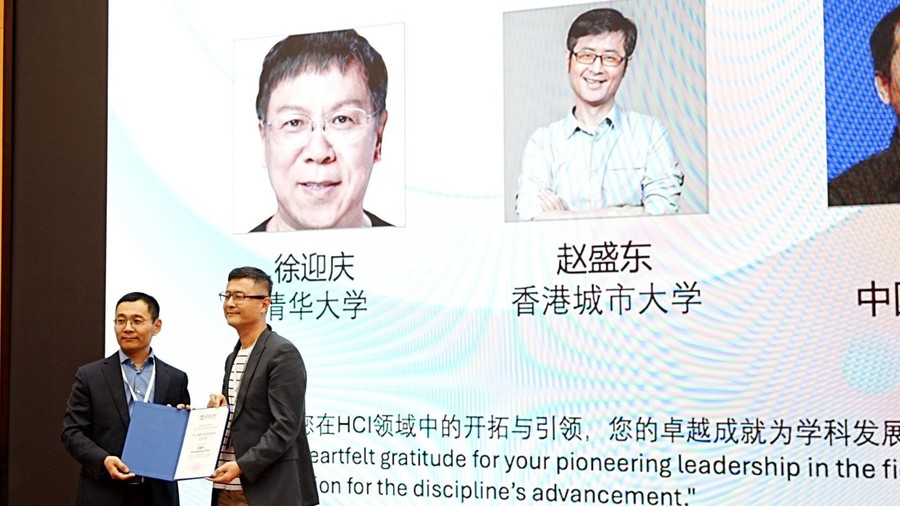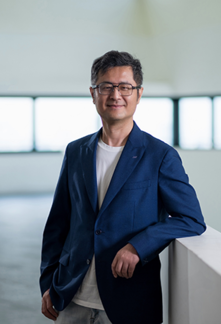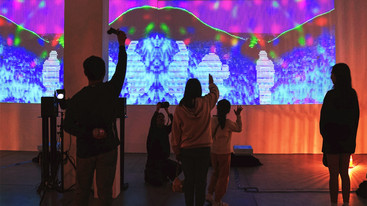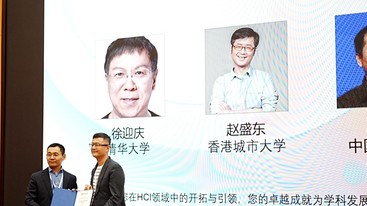Prof. Shengdong Zhao stood at the forefront of a technological breakthrough that promised to reshape the way humans interact with devices. His collaboration with Zhang Tengxian’s team on the pioneering project GestureGPT: Toward Zero-Shot Free-Form Hand Gesture Understanding with Large Language Model Agents earned widespread acclaim, culminating in the Best Paper Award at ACM ISS 2024. This project sought to answer a fundamental challenge in gesture recognition: enabling machines to understand human gestures as naturally and intuitively as humans do. By harnessing the capabilities of large language models (LLMs), GestureGPT offered a paradigm shift. It combined contextual inference with interaction data to infer a user’s intent, making gesture-based interfaces seamless and adaptive. For his contributions, Prof. Zhao was also honored with the ICACHI Pioneer Award, underscoring his impact on the field.
The inception of GestureGPT was driven by a recognition of the limitations inherent in conventional gesture-based systems. Traditional interfaces often relied on fixed libraries of predefined gestures, requiring users to either memorize specific movements or customize their own. This rigidity, while functional, fell short of the natural interaction humans experience in everyday communication. In contrast, people interpret gestures effortlessly by synthesizing multiple factors—contextual cues, prior experiences, and common sense—without requiring explicit instructions or demonstrations. GestureGPT was born from the desire to replicate this natural human ability, aiming to deliver a gesture recognition framework that adapted to users rather than demanding they adapt to the system.
At the core of GestureGPT was a sophisticated, human-inspired architecture that mimicked the thought processes involved in interpreting gestures. The framework relied on a triple-agent system that worked collaboratively to process and understand user input. The Gesture Description Agent served as the initial point of contact, translating raw hand movements into natural language descriptions using hand landmark coordinates. These descriptions then passed to the Gesture Inference Agent, which interpreted the gesture’s meaning by considering interaction history, gaze tracking, and other contextual elements. Finally, the Context Management Agent orchestrated the entire process, refining interpretations through iterative exchanges between the agents. Together, they grounded a user’s gesture in a specific action, creating an interface that felt intuitive and fluid.
The potential of this novel approach was vividly demonstrated in real-world testing scenarios. In tests involving smart home control and online video streaming, GestureGPT proved its ability to operate effectively even in unfamiliar scenarios. These zero-shot evaluations, where the system processed gestures without prior training, yielded promising results. For smart home tasks, GestureGPT achieved a Top-1 accuracy of 44.79% and a Top-5 accuracy of 83.59%, while in video streaming, it reached 37.50% and 73.44%, respectively. These outcomes highlighted the system’s potential to interpret gestures in diverse and dynamic environments.
The success of GestureGPT signals a transformative future for gesture interfaces. By transcending the constraints of predefined gesture libraries and embracing the fluidity of free-form interaction, it approaches the way for more intuitive and human-centered technologies. GestureGPT is not just a technological innovation but a vision realized—one that brings us closer to bridging the gap between human intention and machine understanding.







